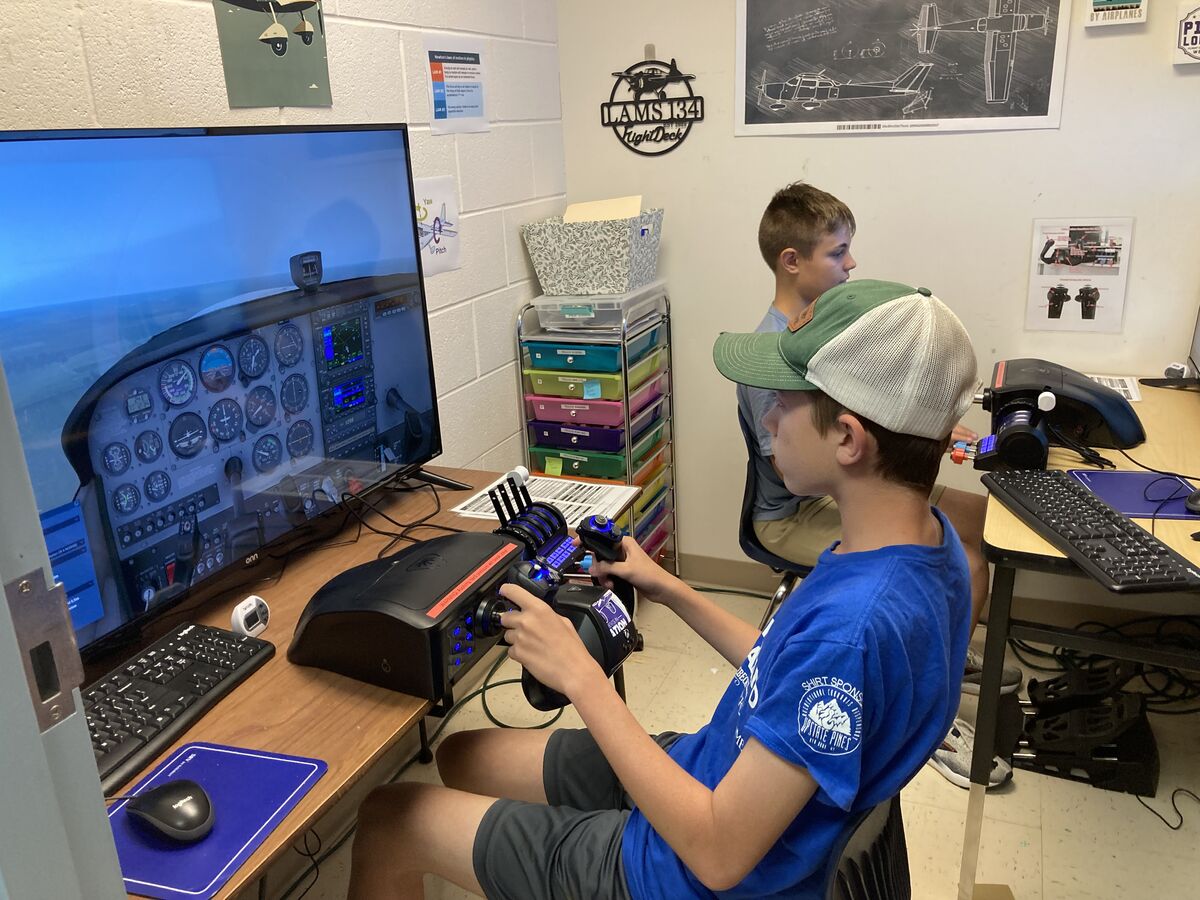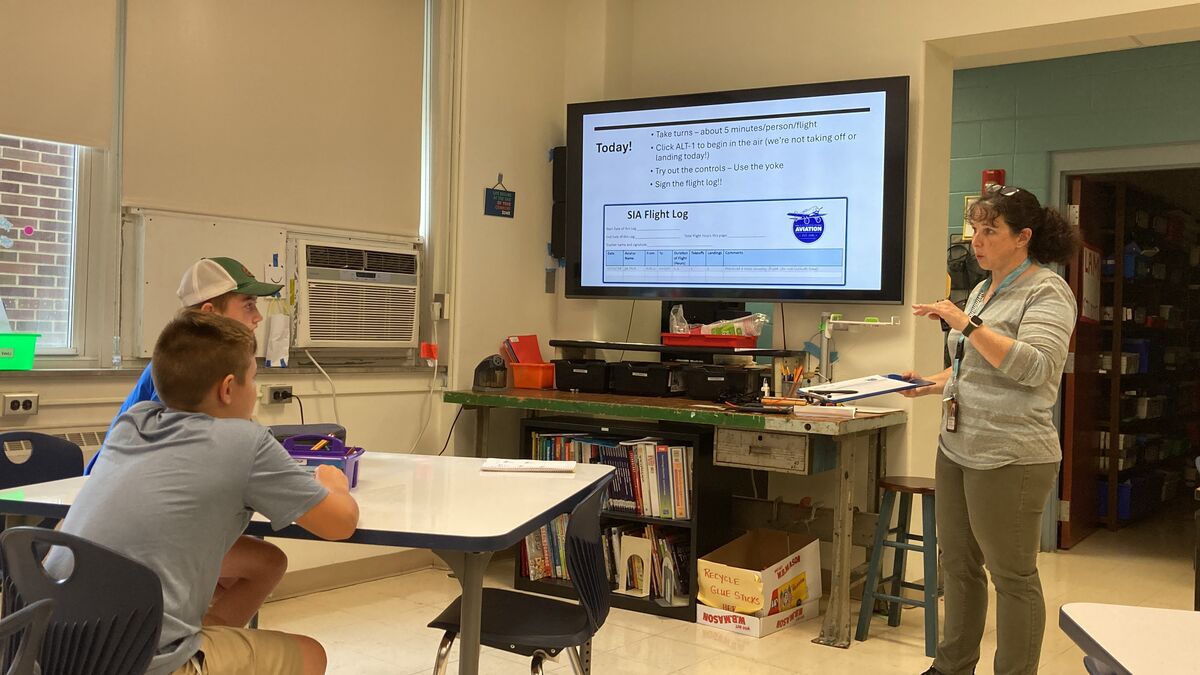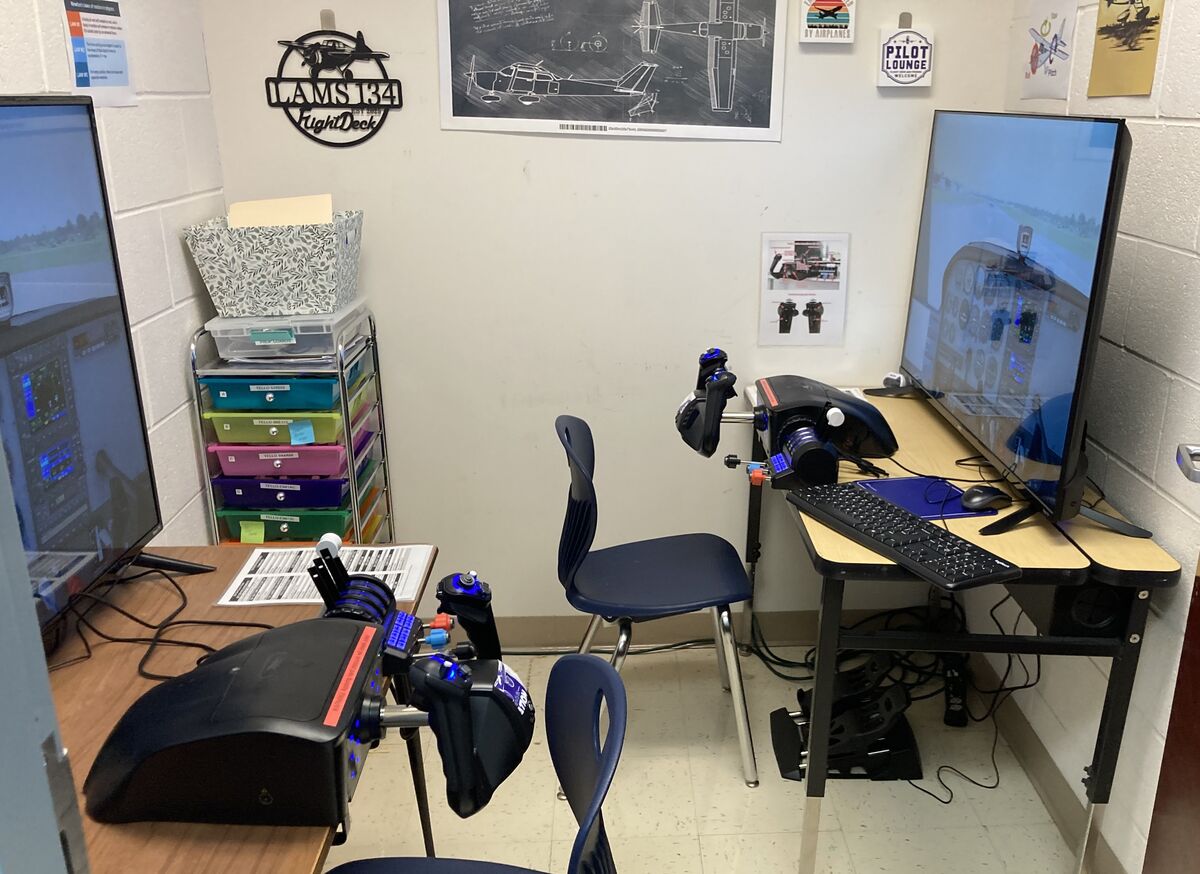Flight simulators expand opportunities for aviation career exploration

The school last week set up two new flight simulators in its technology education classroom, which will be used in the sixth-grade flight and space class and the newly created Future Flyers club for seventh and eighth grade students. The club’s first meetings, which will be held during rotating lunch periods, were Wednesday.
“We want to get kids excited about something new that could possibly lead into a career or a hobby,” technology education teacher Jen Melitski said. “We know that there’s a pilot shortage right now. The more people we can get interested in this industry is great.”
Several Red Hook graduates, Melitski said, have gone on to complete the aviation programs at Dutchess Community College at Hudson Valley Regional Airport and are pursuing careers in the field. In addition to the flight and space class, last year for the first time she took the sixth grade to the Old Rhinebeck Aerodrome, a field trip she plans to continue this year. The simulators will take those aviation exposure efforts to another, more tangible level.
“We talk in sixth grade about all the vocabulary that’s associated with flight – the lift, the thrust, the weight, the drag – and trying to get all those different pieces and parts,” Melitski said, “but it’s different when you’re actually sitting and using a real plane.
“It might pique an interest and make them think, ‘Maybe I could do that,’” she said. “They’re young. This is the time to figure out what those passions are.”
Melitski obtained a grant from The SIA Foundation, which stands for Students In Aviation, to purchase one simulator and the district purchased another. The nonprofit SIA Foundation, founded in 2016, has donated more than 100 simulators to schools across the country to fulfill its mission to “ignite a passion for aviation and aerospace” and introduce “students to the world of aviation. In addition to the grant, SIA helped Melitski set the equipment up and showed her the basics of how to fly.
The simulators offer several different types of planes to use – on Wednesday they flew Cessna 172s – with more available, and they fly over real maps. Everyone who uses the simulators will also make entries into a flight log to track their experience.
The students in the club are eager, and pushing the pace of how Melitski thought her instruction would go. At the outset, she told them to just get familiar with the controls, and they would work on takeoffs and operating the rudders next time. Midway through the first session, one asked her, “If I could land this plane, would you be impressed?”
His first attempt to land saw his plane bounce on its wheels as it careened off the runway onto a patch of grass. His second attempt was fit for first-class travel, perfectly splitting the runway.
“I’m impressed,” she said, before noting, “I shouldn’t be surprised.” The eighth grader, Callum Kolbinskie, works in the youth program at the Aerodrome and is one of several aviation enthusiasts Melitski knows will devour the opportunities afforded by the simulators. They, she said, were the inspiration for offering the club.
As a student going through the flight class two years ago, “every plane I showed Callum, he knew the model, he knew the make, it’s great. He’s all-in on airplanes.”
Though she has a loose idea of what she wants to do with the Future Flyers club, she plans to let the students dictate how the curriculum evolves. “We can start looking at some of the things they may need if they wanted to get their pilot’s license and do those things,” Melitski said. “Clubs are often student-driven, anyway.”
For now, the simulators will only be used in the flight and space class and by members of the club. “But," Melitski said, "we’ll see where it leads."

 Additional settings for Safari Browser.
Additional settings for Safari Browser.



